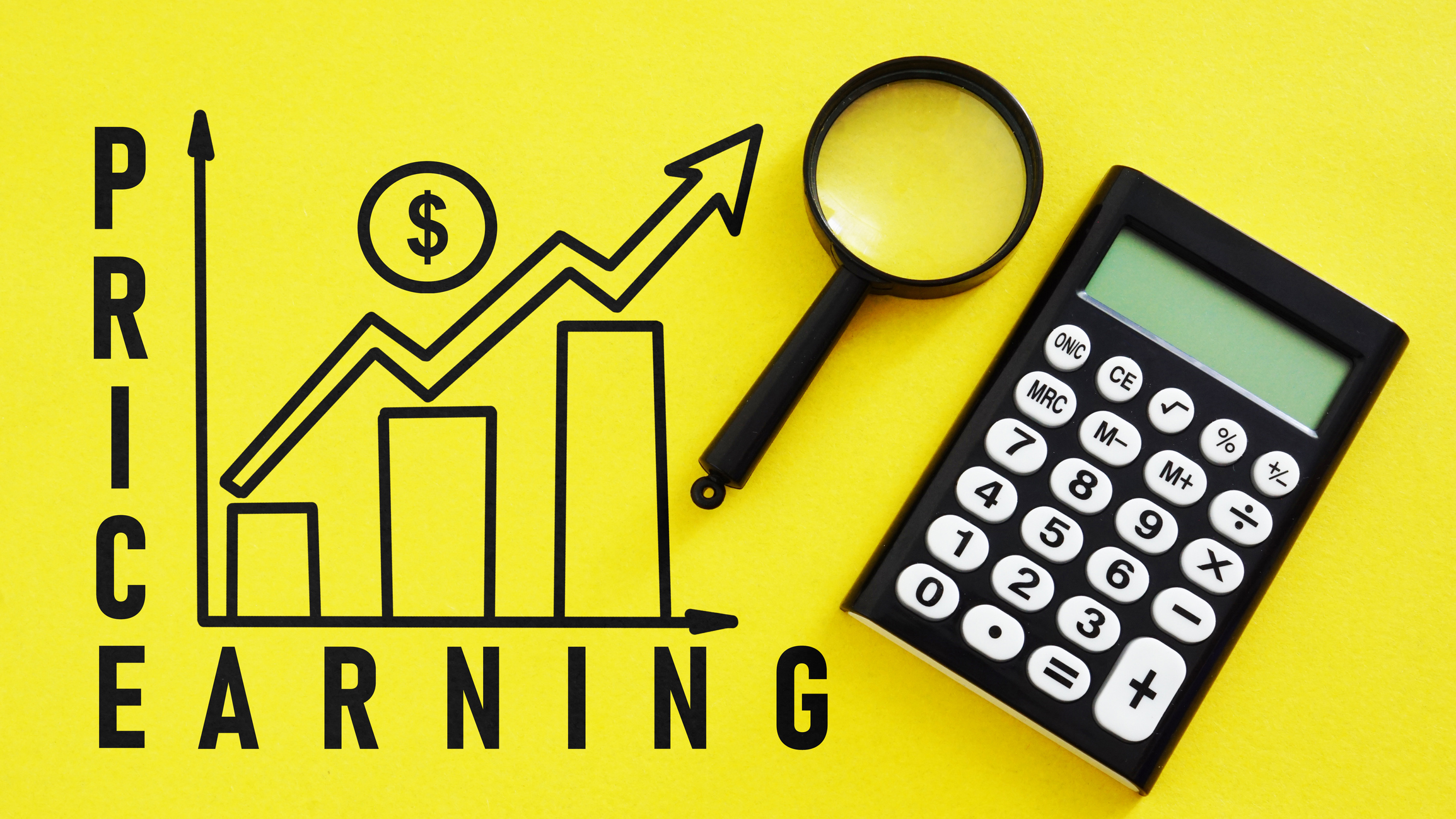What Is a P/E Ratio and How Do I Use It in Investing?
The price-to-earnings ratio, or P/E ratio, is a tool you can use to measure whether you're getting a good deal on a stock. Here's how it works.


The price-to-earnings ratio, or P/E ratio, is just one of many tools we can use to analyze a stock. Indeed, there are as many ways to do that as there are flavors of cake.
Some may prefer a vanilla approach that keeps things simple and sweet. Others like to dive into the murky depths of a death by chocolate.
The P/E ratio is closer to the vanilla end of the spectrum.

Sign up for Kiplinger’s Free E-Newsletters
Profit and prosper with the best of expert advice on investing, taxes, retirement, personal finance and more - straight to your e-mail.
Profit and prosper with the best of expert advice - straight to your e-mail.
Regardless of your taste preferences, it's wise to have a method to your madness when picking stocks and determining whether or not they're priced at a reasonable valuation.
"Stock prices can move around a lot, so having multiple ways to determine a stock's value is important information when deciding to buy or sell a stock," says Ayako Yoshioka, a senior portfolio manager at Wealth Enhancement Group.
The P/E ratio is probably the most widely known way to gauge a stock's valuation.
What is a P/E ratio?
"The P/E tells investors based on current earnings, how expensive or inexpensive a company's current price is," says Terry Sylvester Charron, senior director of Family Wealth Investment Advisor Group at BNY Mellon Wealth Management.
The P/E ratio is calculated by dividing a stock's current share price by the company's earnings per share (EPS).
"EPS" is the earnings for the previous 12 months divided by the number of outstanding shares of stock.
The good news is you'll seldom need to calculate P/E yourself.
Most tools for DIY investors and financial websites include price-to-earnings data on stock analysis pages.
If you want to verify the website's calculations or just prefer to crunch your own numbers, you can usually find earnings per share on a company's income statement below net income.
What does the P/E ratio tell you about an investment?
"The P/E ratio tells how much an investor is willing to pay for $1 of earnings of the underlying company," says Andrew Crowell, a financial advisor and vice chairman of Wealth Management at D.A. Davidson.
For example, according to Morningstar, Apple's (AAPL) P/E is 35.0. This means investors are willing to pay $35.00 per $1 of the company's earnings to own Apple stock.
"The P/E ratio gives us insight into how the market perceives the earnings potential of an investment," Charron says.
"Companies with faster earnings growth potential and more sustainable earnings power, for instance, will often have a higher P/E ratio than peers with slower growth and/or lower quality earnings."
Price-to-earnings ratios vary by sector, with companies in one sector tending to have higher multiples than those in another sector, Crowell says.
For instance, Morningstar reports a P/E ratio for the Technology Select Sector SPDR Fund (XLK), which represents the tech sector, of 26.9.
Meanwhile, the P/E ratio for the energy sector, as measured by the Energy Select Sector SPDR Fund (XLE), is at 14.8.
P/E ratios also tend to rise during bull markets and contract during bear markets, so it's important to keep context in mind.
How can you use the P/E ratio when investing?
You can use the P/E ratio to compare stocks to their peers or the market in general.
"For example, all other metrics being equal, an industrial stock with a P/E of 17 is more expensive than an industrial stock with a P/E of 13," Crowell says.
"If the two companies have similar growth rates, revenues, debt levels, etc., this implies that the higher P/E stock is more expensive than the lower."
As with most purchasing decisions, you never want to pay more than necessary for an investment, so choosing low P/E companies can be a savvy investment strategy.
"Buying stocks at the right price is critical, and having the discipline not to overpay can help an investor make smart investment decisions," Crowell says.
You can also look back at history and see where the stock's average P/E ratio has been and whether the current P/E is at a premium or a discount, Yoshioka says.
That said, it's dangerous to oversimplify the power of the P/E ratio. Low P/E stocks are not necessarily safer than high P/E ones, Crowell says. "P/E is simply one measure of valuation."
A company's reported earnings can vary based on changes in accounting, adjustments made by the company and other fluctuations, so having an additional form of valuation is helpful as well, Yoshioka says.
She recommends price-to-sales (P/S) or price-to-free cash flow (P/FCF). Each of these metrics takes a similar approach to P/E in determining a good value stock vs an expensive stock.
Simply replace the EPS calculation on the bottom of the equation with the company's sales or free cash flow.
Related content
Get Kiplinger Today newsletter — free
Profit and prosper with the best of Kiplinger's advice on investing, taxes, retirement, personal finance and much more. Delivered daily. Enter your email in the box and click Sign Me Up.

Coryanne Hicks is an investing and personal finance journalist specializing in women and millennial investors. Previously, she was a fully licensed financial professional at Fidelity Investments where she helped clients make more informed financial decisions every day. She has ghostwritten financial guidebooks for industry professionals and even a personal memoir. She is passionate about improving financial literacy and believes a little education can go a long way. You can connect with her on Twitter, Instagram or her website, CoryanneHicks.com.
-
 6 Stunning Waterfront Homes for Sale Around the US
6 Stunning Waterfront Homes for Sale Around the USFrom private peninsulas to lakes, bayous and beyond, Kiplinger's "Listed" series brings you another selection of dream homes for sale on the waterfront.
By Charlotte Gorbold Published
-
 Six Reasons to Disinherit Someone and How to Do It
Six Reasons to Disinherit Someone and How to Do ItWhether you're navigating a second marriage, dealing with an estranged relative or leaving your assets to charity, there are reasons to disinherit someone. Here's how.
By Donna LeValley Published
-
 Should You Still Wait Until 70 to Claim Social Security?
Should You Still Wait Until 70 to Claim Social Security?Delaying Social Security until age 70 will increase your benefits. But with shortages ahead, and talk of cuts, is there a case for claiming sooner?
By Evan T. Beach, CFP®, AWMA® Published
-
 Retirement Planning for Couples: How to Plan to Be So Happy Together
Retirement Planning for Couples: How to Plan to Be So Happy TogetherPlanning for retirement as a couple is a team sport that takes open communication, thoughtful planning and a solid financial strategy.
By Andrew Rosen, CFP®, CEP Published
-
 Market Turmoil: What History Tells Us About Current Volatility
Market Turmoil: What History Tells Us About Current VolatilityThis up-and-down uncertainty is nerve-racking, but a look back at previous downturns shows that the markets are resilient. Here's how to ride out the turmoil.
By Michael Aloi, CFP® Published
-
 Stock Market Today: Stocks Surge to Close a Volatile Week
Stock Market Today: Stocks Surge to Close a Volatile WeekIt was another day with a week's worth of both news and price action, but it ended on a strongly positive note.
By David Dittman Published
-
 Home Insurance: How to Cut Costs Without Losing Coverage
Home Insurance: How to Cut Costs Without Losing CoverageNatural disasters are causing home insurance premiums to soar, but don't risk dropping your coverage completely when there are ways to keep costs down.
By Jared Elson, Investment Adviser Published
-
 Markets Roller Coaster: Resist the Urge to Make Big Changes
Markets Roller Coaster: Resist the Urge to Make Big ChangesYou could do more harm than good if you react emotionally to volatility. Instead, consider tax-loss harvesting, Roth conversions and how to plan for next time.
By Frank J. Legan Published
-
 Why Homeowners Insurance Has Gotten So Very Expensive
Why Homeowners Insurance Has Gotten So Very ExpensiveThe home insurance industry is seeing more frequent and bigger claims because of weather, wildfires and other natural disasters.
By Karl Susman, CPCU, LUTCF, CIC, CSFP, CFS, CPIA, AAI-M, PLCS Published
-
 Stock Market Today: Uncertainty Proliferates: Dow Loses 1,014 Points
Stock Market Today: Uncertainty Proliferates: Dow Loses 1,014 PointsWeaker-than-expected consumer inflation data wasn't enough to stabilize sentiment during another volatile day for financial markets.
By David Dittman Published